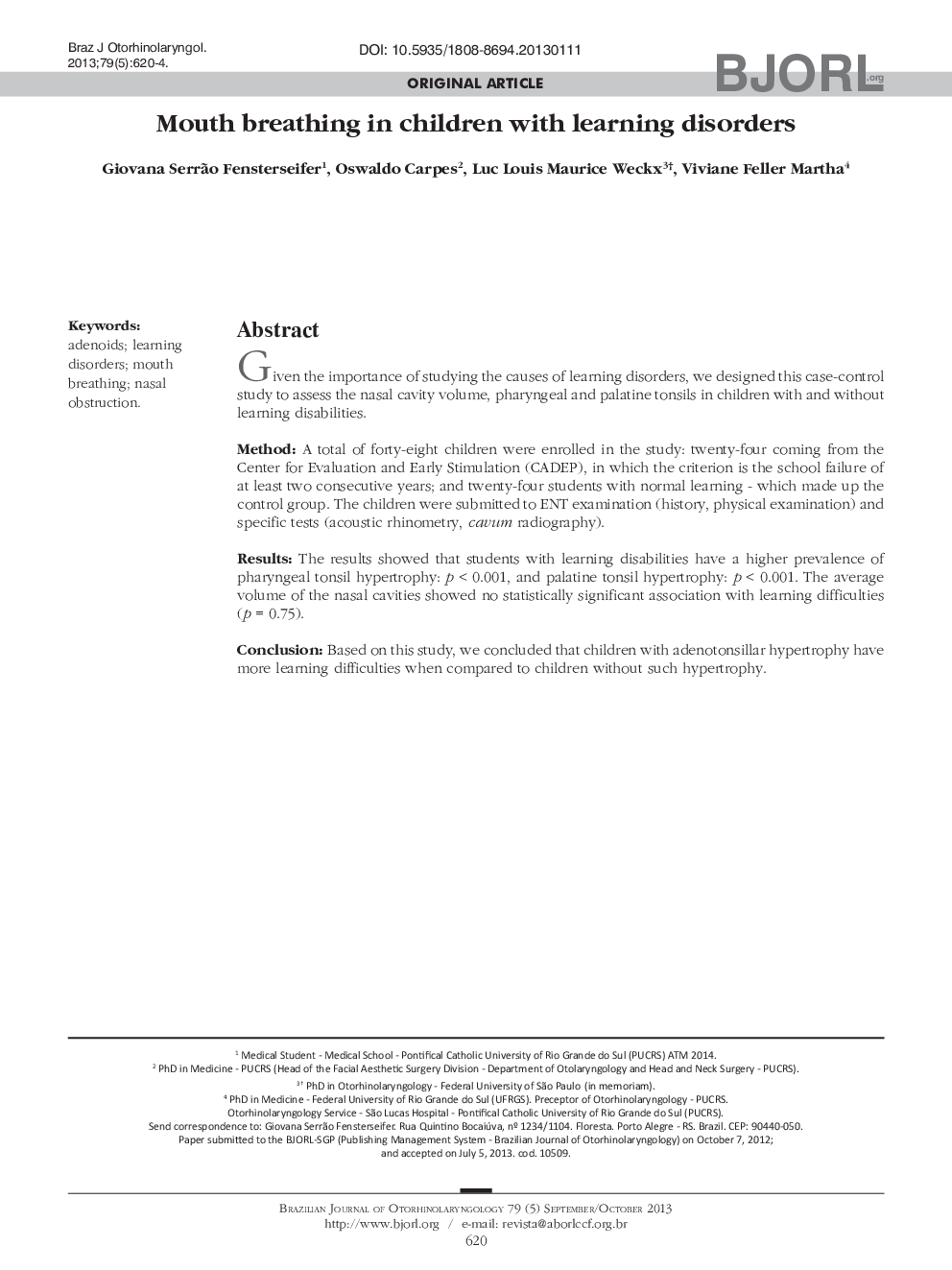| Article ID | Journal | Published Year | Pages | File Type |
|---|---|---|---|---|
| 4106564 | Brazilian Journal of Otorhinolaryngology | 2013 | 5 Pages |
Given the importance of studying the causes of learning disorders, we designed this case-control study to assess the nasal cavity volume, pharyngeal and palatine tonsils in children with and without learning disabilities.MethodA total of forty-eight children were enrolled in the study: twenty-four coming from the Center for Evaluation and Early Stimulation (CADEP), in which the criterion is the school failure of at least two consecutive years; and twenty-four students with normal learning - which made up the control group. The children were submitted to ENT examination (history, physical examination) and specific tests (acoustic rhinometry, cavum radiography).ResultsThe results showed that students with learning disabilities have a higher prevalence of pharyngeal tonsil hypertrophy: p < 0.001, and palatine tonsil hypertrophy: p < 0.001. The average volume of the nasal cavities showed no statistically significant association with learning difficulties (p = 0.75).ConclusionBased on this study, we concluded that children with adenotonsillar hypertrophy have more learning difficulties when compared to children without such hypertrophy.
